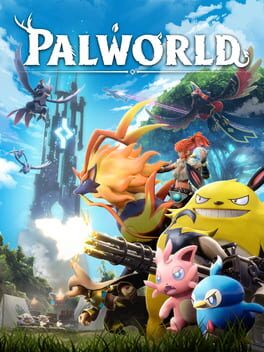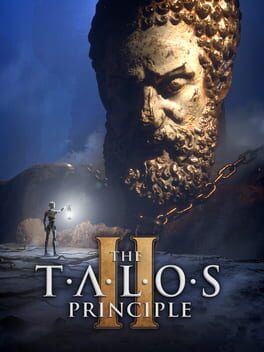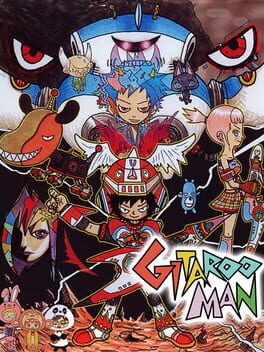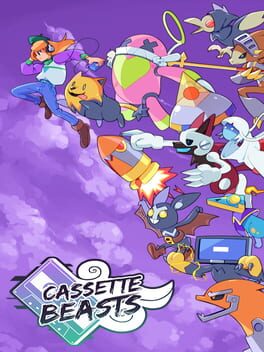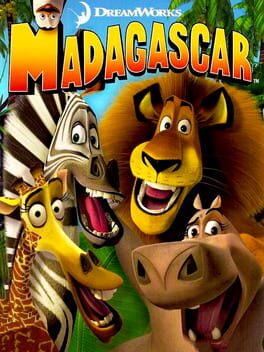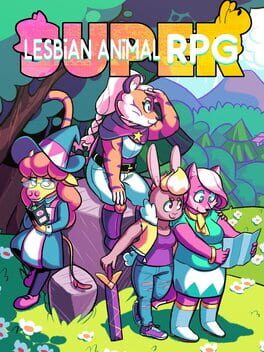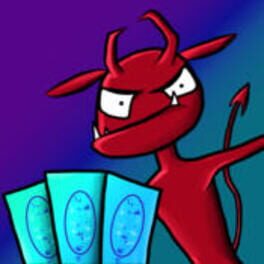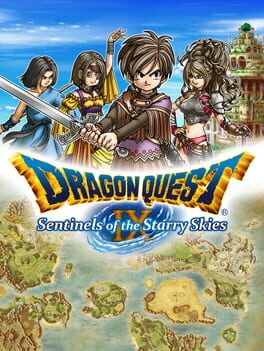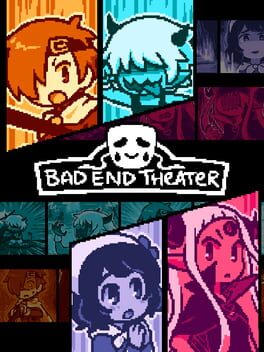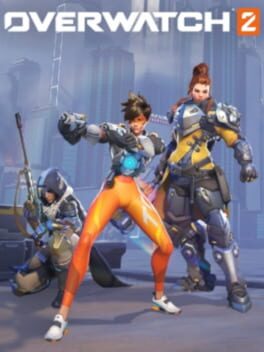ESPizza
2024
Really good concept and It's a great background game, but I feel like it lacks depth. Everything is down to luck, from the cards you draw to the shop items to the boss blind conditions. It makes it feel like you never really have the agency to recover a run on your own merit. Definitely still enjoyable in its own right, but I don't think I'll ever be as engaged in this as other roguelikes.
2024
Talos Principle 2 is a game I’d been looking forward to for years. The original Talos Principle was one of my favourite puzzle games, and I couldn’t wait to see how they would expand on the original. I had pretty high expectations , and after playing the game, I can definitely say that it didn’t exactly live up to these high expectations, but it was still a very worthy sequel.
The game retains the high quality of puzzles, and I found all the new tools introduced really satisfying to use (except the gravity mechanics, which I found a bit lacking). The RGB converter was a big standout for me, as it felt like a natural extension of the games design. I ended up enjoyed nearly every puzzle in the game, apart from a few exceptions. However, while the puzzles individually may be satisfying, the pattern of the puzzles is very formulaic. Each area revolves around one mechanic, with the difficulty resetting to a baseline at the start of each zone to get the player accustomed to the new mechanic, which causes the difficulty to be all over the place. The mechanic of the two optional ‘lost puzzles’ in each area could have been a way to ensure more challenging puzzles in each area, but the difficulty for them is often varied too. This leaves the endgame gold puzzles as the only puzzles that are meant to be a real challenge, which is a bit of a disappointment as someone that was looking for a bit more of a challenge. With the game having a currency to allow you to make a puzzle easier (being able to get it back by clearing the puzzle normally), it feels like a missed opportunity to go a bit more wild the the puzzle design.
Something that’s worth bringing up before my next point is the size of each world, as they are all pretty big. There’s nothing wrong with how they look, with the size allowing for massive, beautiful structures that tower over the player and are amazing to look at. Exploring these maps isn’t too bad when you’re exploring for the first time, as puzzles are placed in a way so that you can get to the next one pretty quickly, and often hit a decent amount of collectables with a short detour. However, these maps become incredibly irritating when you begin to do the optional star puzzles.
The star puzzles are the most disappointing and often tedious part of this game. Stars in the original Talos Principle always felt unique in how they were found. Some required exploration, some required you to use the objects in a puzzle in a unique way, and some even required you to smuggle objects out of puzzles. All of them felt really satisfying to solve.
In Talos 2, there are three types of statues that relate to how you get the star. Prometheus statues are by far the worst: you have to find a flame and follow it around the map, catching it as it stops in certain spots. A majority of the time, there is absolutely no thinking to be had here, with only a couple of times where it would stop in a spot that required some sort of puzzle solving.
Sphinx statues had the most potential, as they require you to solve a riddle in the form of a image on the statue. However, most follow the exact same pattern of either showing a picture or map with an ‘X’ marking the right spot, or some sort of pattern that often relates to some incredibly out of place objects hidden in the map. They’re usually incredibly easy to figure out with nearly no thinking required once you find the right spot.
Pandora statues are, in my opinion, the most interesting. They require you to fire a laser of the right colour into the box the statue is holding, which usually means that you have to go back into certain puzzles to get it to work, often having to divert the laser into receivers across the map to transfer it, or find a hidden tool in the map to assist you.
Regardless of the quality of the puzzles, they all require you to go searching across the map, which gets really tiring with how large the worlds are. Running around to find little switches across the whole map for sphinx statues isn’t fun. Chasing a flame across the map for a prometheus statue isn’t fun. Running around trying to find a tool tucked into a tiny corner of the map for a pandora puzzle isn’t fun. These puzzles could have all been so interesting, but they just end up a letdown for the most part.
Luckily, I don’t really have any problems with the rest of the game. I know some people have issues with the addition of characters that you can talk and interactive with, but I found all the characters really enjoyable, and there’s enough personalities across them that I’m sure you’ll be able to find at least one you enjoy talking to (Yaqut being my favourite). The story itself is pretty good too, with it still having that focus on philosophy that was so present in the original game, along with some pretty nice story beats. The music in this game is great too! I don’t have much to say about it and a lot of it was moreso background noise for me, but there are a few points in the game where it really stood out.
At the end of everything, is this still a good game? Of course! My biggest issue was with optional content for the game, and regardless of my issues with how difficulty was handled, it doesn’t affect the quality by any means. Besides, it makes the game a bit more accessible which is always good! Besides, we always have DLC as a way to up the difficulty. This game has so much content and was clearly made with a lot of care. With how cheap the game is (being underpriced, in my opinion), it’s 100% worth a shot.
The game retains the high quality of puzzles, and I found all the new tools introduced really satisfying to use (except the gravity mechanics, which I found a bit lacking). The RGB converter was a big standout for me, as it felt like a natural extension of the games design. I ended up enjoyed nearly every puzzle in the game, apart from a few exceptions. However, while the puzzles individually may be satisfying, the pattern of the puzzles is very formulaic. Each area revolves around one mechanic, with the difficulty resetting to a baseline at the start of each zone to get the player accustomed to the new mechanic, which causes the difficulty to be all over the place. The mechanic of the two optional ‘lost puzzles’ in each area could have been a way to ensure more challenging puzzles in each area, but the difficulty for them is often varied too. This leaves the endgame gold puzzles as the only puzzles that are meant to be a real challenge, which is a bit of a disappointment as someone that was looking for a bit more of a challenge. With the game having a currency to allow you to make a puzzle easier (being able to get it back by clearing the puzzle normally), it feels like a missed opportunity to go a bit more wild the the puzzle design.
Something that’s worth bringing up before my next point is the size of each world, as they are all pretty big. There’s nothing wrong with how they look, with the size allowing for massive, beautiful structures that tower over the player and are amazing to look at. Exploring these maps isn’t too bad when you’re exploring for the first time, as puzzles are placed in a way so that you can get to the next one pretty quickly, and often hit a decent amount of collectables with a short detour. However, these maps become incredibly irritating when you begin to do the optional star puzzles.
The star puzzles are the most disappointing and often tedious part of this game. Stars in the original Talos Principle always felt unique in how they were found. Some required exploration, some required you to use the objects in a puzzle in a unique way, and some even required you to smuggle objects out of puzzles. All of them felt really satisfying to solve.
In Talos 2, there are three types of statues that relate to how you get the star. Prometheus statues are by far the worst: you have to find a flame and follow it around the map, catching it as it stops in certain spots. A majority of the time, there is absolutely no thinking to be had here, with only a couple of times where it would stop in a spot that required some sort of puzzle solving.
Sphinx statues had the most potential, as they require you to solve a riddle in the form of a image on the statue. However, most follow the exact same pattern of either showing a picture or map with an ‘X’ marking the right spot, or some sort of pattern that often relates to some incredibly out of place objects hidden in the map. They’re usually incredibly easy to figure out with nearly no thinking required once you find the right spot.
Pandora statues are, in my opinion, the most interesting. They require you to fire a laser of the right colour into the box the statue is holding, which usually means that you have to go back into certain puzzles to get it to work, often having to divert the laser into receivers across the map to transfer it, or find a hidden tool in the map to assist you.
Regardless of the quality of the puzzles, they all require you to go searching across the map, which gets really tiring with how large the worlds are. Running around to find little switches across the whole map for sphinx statues isn’t fun. Chasing a flame across the map for a prometheus statue isn’t fun. Running around trying to find a tool tucked into a tiny corner of the map for a pandora puzzle isn’t fun. These puzzles could have all been so interesting, but they just end up a letdown for the most part.
Luckily, I don’t really have any problems with the rest of the game. I know some people have issues with the addition of characters that you can talk and interactive with, but I found all the characters really enjoyable, and there’s enough personalities across them that I’m sure you’ll be able to find at least one you enjoy talking to (Yaqut being my favourite). The story itself is pretty good too, with it still having that focus on philosophy that was so present in the original game, along with some pretty nice story beats. The music in this game is great too! I don’t have much to say about it and a lot of it was moreso background noise for me, but there are a few points in the game where it really stood out.
At the end of everything, is this still a good game? Of course! My biggest issue was with optional content for the game, and regardless of my issues with how difficulty was handled, it doesn’t affect the quality by any means. Besides, it makes the game a bit more accessible which is always good! Besides, we always have DLC as a way to up the difficulty. This game has so much content and was clearly made with a lot of care. With how cheap the game is (being underpriced, in my opinion), it’s 100% worth a shot.
2001
I honestly don't get the hype around this? It was a cute little rhythm game, but all the aspects I heard people hyping up just didn't do it for me. I definitely agree with the graphics being nice and (most) the soundtrack being good. But the story was pretty cheesy and generic, the most unique gameplay element is the line tracing, and the game itself wasn't difficult. This is ignoring master mode, which from my first attempt at level 1 definitely seems like it would be a challenge, and I might go back to give it another shot in the future.
Overall, a fun way to spend an hour or two, but nothing that blew me away.
Overall, a fun way to spend an hour or two, but nothing that blew me away.
2023
I decided to play this game after seeing the great reviews it was getting at launch, and I'm definitely glad I did, as I was craving a good creature-collector and this feels like a good in-between of the simplicity of pokemon and the complexity of something like SMT.
The game has you in an open world, with progression to certain parts of the map barred by getting upgrades to your movement by capturing certain monsters in each zone. These include simple things such as swimming in water, to more advanced tools like a magnetism field, that can pull certain objects to you, and pull you to others. The way I found these tools felt natural, and I never felt like it was going to take me ages to unlock a new tool to get where I needed.
Before I talk about more I want to quickly praise the combat. The game has the standard formula of types with resistances and weaknesses, but instead of affecting damage, the game gives you buffs and debuffs. For example, hitting a water monster with a fire attack creates steam around the water monster, increasing their evasion. However, hitting them with a grass attack gives you a health leech at the end of their moves. The game has an incredibly large amount of status effects you can achieve through this, leading to a lot of strategy. This is increased due to always having a partner with you, allowing a lot of experimentation with combos. You can also build a meter to fuse with your partner in battle, combining your two monsters into one for a power boost.
There are two main things you'll be searching for in the world. One are the ranger captains, 16 people that serve as the sort of 'gym leaders' for this game. You'll find them in the overworld, and instead of being focused on a type they each have their own playstyle you have to work around. Some of these were pretty hard to work around, with them abusing some strategies that can be really strong.
The other main quest are the archangel boss fights. These are more traditional bosses with large health pools, and usually with some sort of gimmick that you have to work around. While the fights themselves are fun, I would especially like to commend the designs for the archangels, with each one being done in a different artstyle, from a mish-mash of collage images to a realistic-looking puppet, they all looked great and I often looked forward to seeing the new design more than the actual fight.
It's also worth noting that, as far as I could tell, these fights scale to the current level of the player to an extent. This alleviates the issue of finding a boss in a beginner area that you missed and steamrolling it, which is really nice to see.
You travel through the game with a companion, of which you have six. You unlock them throughout the game by completing a side-quest for them, and can swap them at the main hub. They also all have their own social-link style friendship system, which unlocks new conversations with and a boost to your fusion power with them each level. While this is a nice system to have, and the characters are all charming, the conversations you get are pretty short, and it would've been nice to see more development through them.
I'd also like to shout out the games music. It has a variety of vocal tracks which naturally fade in and out of instrumental tracks. Most of these kick in during battle when you fuse, but there's one that plays in the hub town which is definitely the standout for the game.
Overall, a really fun game! I enjoyed pretty much everything about it, with my only main gripe being the lack of extra development that I would've loved to see your party receive. I haven't played many creature-collecting games outside of pokemon, but if more are up to this standard, I'll definitely be trying them.
The game has you in an open world, with progression to certain parts of the map barred by getting upgrades to your movement by capturing certain monsters in each zone. These include simple things such as swimming in water, to more advanced tools like a magnetism field, that can pull certain objects to you, and pull you to others. The way I found these tools felt natural, and I never felt like it was going to take me ages to unlock a new tool to get where I needed.
Before I talk about more I want to quickly praise the combat. The game has the standard formula of types with resistances and weaknesses, but instead of affecting damage, the game gives you buffs and debuffs. For example, hitting a water monster with a fire attack creates steam around the water monster, increasing their evasion. However, hitting them with a grass attack gives you a health leech at the end of their moves. The game has an incredibly large amount of status effects you can achieve through this, leading to a lot of strategy. This is increased due to always having a partner with you, allowing a lot of experimentation with combos. You can also build a meter to fuse with your partner in battle, combining your two monsters into one for a power boost.
There are two main things you'll be searching for in the world. One are the ranger captains, 16 people that serve as the sort of 'gym leaders' for this game. You'll find them in the overworld, and instead of being focused on a type they each have their own playstyle you have to work around. Some of these were pretty hard to work around, with them abusing some strategies that can be really strong.
The other main quest are the archangel boss fights. These are more traditional bosses with large health pools, and usually with some sort of gimmick that you have to work around. While the fights themselves are fun, I would especially like to commend the designs for the archangels, with each one being done in a different artstyle, from a mish-mash of collage images to a realistic-looking puppet, they all looked great and I often looked forward to seeing the new design more than the actual fight.
It's also worth noting that, as far as I could tell, these fights scale to the current level of the player to an extent. This alleviates the issue of finding a boss in a beginner area that you missed and steamrolling it, which is really nice to see.
You travel through the game with a companion, of which you have six. You unlock them throughout the game by completing a side-quest for them, and can swap them at the main hub. They also all have their own social-link style friendship system, which unlocks new conversations with and a boost to your fusion power with them each level. While this is a nice system to have, and the characters are all charming, the conversations you get are pretty short, and it would've been nice to see more development through them.
I'd also like to shout out the games music. It has a variety of vocal tracks which naturally fade in and out of instrumental tracks. Most of these kick in during battle when you fuse, but there's one that plays in the hub town which is definitely the standout for the game.
Overall, a really fun game! I enjoyed pretty much everything about it, with my only main gripe being the lack of extra development that I would've loved to see your party receive. I haven't played many creature-collecting games outside of pokemon, but if more are up to this standard, I'll definitely be trying them.
2006
Finally got around to playing this after hearing so much about it, and it was as good as everyone was saying! Combat had plenty of depth that I'm not knowledgeable enough to talk about in length, but even with what I knew it was incredibly satisfying. The dynamic difficulty felt really good, and did its job giving me a constant challenge throughout the game. Story was the perfect amount of stupid, and although I didn't find much of the music memorable (apart from the credits) it still sounded good. My only major issue is some levels being a bit annoying to get through, and some general issues to do with the age of the game (I understand that it's important to the combat, but the tank controls can still feel awkward at times.)
Overall really glad I played this though! Decent chance I'd raise the score to a 10 eventually.
Overall really glad I played this though! Decent chance I'd raise the score to a 10 eventually.
2005
2023
This game really came out of nowhere and fulfilled my favourite niche of 'rhythm combat game' really well!
Combat is exceptional and probably the best incorporation of rhythm-based combat I've seen since necrodancer. Graphics are also amazing and captures the cartoon style really well. Looks like something I would've watched on cartoon network in the early 2010's, especially with the dialogue.
My only issue is that the segments between combat go on a bit too long, especially with how clunky the platforming can feel. Also would've loved for the game to have more boss battles around the middle, since it feels like they put most of them towards the end.
Overall a fantastic game though! Wouldn't be surprised if this ends up being one of my favourites of the year.
Combat is exceptional and probably the best incorporation of rhythm-based combat I've seen since necrodancer. Graphics are also amazing and captures the cartoon style really well. Looks like something I would've watched on cartoon network in the early 2010's, especially with the dialogue.
My only issue is that the segments between combat go on a bit too long, especially with how clunky the platforming can feel. Also would've loved for the game to have more boss battles around the middle, since it feels like they put most of them towards the end.
Overall a fantastic game though! Wouldn't be surprised if this ends up being one of my favourites of the year.
I was expecting to enjoy this game, but it really blew my expectations out of the water.
The story follows four main characters. Melody is a fox girl who has started training to become a paladin in order to support her girlfriend Allison, a rabbit who has decided to start adventuring as a fighter. They've formed a guild with their friends Claire, a cow mage and Jodie, a tiger knight. While training Melody and Allison through some introductory dungeon crawling, they stumble into a world-ending problem way out of their control. The basis for the story is nothing you haven't heard before, but it gets elevated by the characters. While most the development does focus on the main four, there's plenty of focus put on the side characters too, with them offering side quests that can shed light on their relation to the party and the world, with a few really sweet ones that also serve as ways to teach your party new skills. There's also plenty of flavour text in the world from talking to characters and interacting with objects, and I found myself interacting with as much as I could just to hear the characters talk more.
Combat itself was pretty simple, but I still found the encounters fun. It's a standard RPG battle system with basic attacks and spells the characters can use, but it mixes it up with two systems. Star power, which is a meter that builds if you do actions that fit your characters class (healer gains some by healing, mage by casting spells, etc.). This can then be spent on powerful moves. There's also spellbooks, which are items you can equip to characters that give them a new set of abilities to use. This was a unique idea I don't think I've seen done before, and gives players that might want to experiment with character builds a way to do that, while also keeping things straightforward for players that would rather just stick the healing spellbook on the healer. It is worth noting that this game isn't too difficult: I never saw the game over screen, and I was able to beat all the side-content without having to do any extra levelling. This may be an issue for some, but it's really nice to have an RPG where you can just do everything without having to worry about grinding (the game does put rooms specifically for grinding right before boss encounters though, which is appreciated.)
Other things to mention are the music, which didn't blow me away as much as similar games did but was still nice to listen too. The artstyle is charming, especially the art used for character portraits and enemies in battle. This isn't to take away from the pixel art, as it's also really good and they do some creative things with it at points in the game. And if it wasn't clear enough from the title, this game is real gay, with plenty of other queer identities present in the story. It was nice to see that the game didn't constantly bring up the 'struggles of being queer' as part of the story too, with only a couple of throwaway lines about coming out being difficult or something similar. It's nice to have a character driven story with queer characters that doesn't constantly focus on that.
Overall, a really sweet game that is 100% worth playing if you are queer (especially if you're trans or a lesbian), and definitely worth giving a look if you're a fan of RPGs and games with a really sweet story. I'm really hoping this game starts picking up in popularity, because games this unapologetic and earnest with how they tell their story deserve it.
The story follows four main characters. Melody is a fox girl who has started training to become a paladin in order to support her girlfriend Allison, a rabbit who has decided to start adventuring as a fighter. They've formed a guild with their friends Claire, a cow mage and Jodie, a tiger knight. While training Melody and Allison through some introductory dungeon crawling, they stumble into a world-ending problem way out of their control. The basis for the story is nothing you haven't heard before, but it gets elevated by the characters. While most the development does focus on the main four, there's plenty of focus put on the side characters too, with them offering side quests that can shed light on their relation to the party and the world, with a few really sweet ones that also serve as ways to teach your party new skills. There's also plenty of flavour text in the world from talking to characters and interacting with objects, and I found myself interacting with as much as I could just to hear the characters talk more.
Combat itself was pretty simple, but I still found the encounters fun. It's a standard RPG battle system with basic attacks and spells the characters can use, but it mixes it up with two systems. Star power, which is a meter that builds if you do actions that fit your characters class (healer gains some by healing, mage by casting spells, etc.). This can then be spent on powerful moves. There's also spellbooks, which are items you can equip to characters that give them a new set of abilities to use. This was a unique idea I don't think I've seen done before, and gives players that might want to experiment with character builds a way to do that, while also keeping things straightforward for players that would rather just stick the healing spellbook on the healer. It is worth noting that this game isn't too difficult: I never saw the game over screen, and I was able to beat all the side-content without having to do any extra levelling. This may be an issue for some, but it's really nice to have an RPG where you can just do everything without having to worry about grinding (the game does put rooms specifically for grinding right before boss encounters though, which is appreciated.)
Other things to mention are the music, which didn't blow me away as much as similar games did but was still nice to listen too. The artstyle is charming, especially the art used for character portraits and enemies in battle. This isn't to take away from the pixel art, as it's also really good and they do some creative things with it at points in the game. And if it wasn't clear enough from the title, this game is real gay, with plenty of other queer identities present in the story. It was nice to see that the game didn't constantly bring up the 'struggles of being queer' as part of the story too, with only a couple of throwaway lines about coming out being difficult or something similar. It's nice to have a character driven story with queer characters that doesn't constantly focus on that.
Overall, a really sweet game that is 100% worth playing if you are queer (especially if you're trans or a lesbian), and definitely worth giving a look if you're a fan of RPGs and games with a really sweet story. I'm really hoping this game starts picking up in popularity, because games this unapologetic and earnest with how they tell their story deserve it.
2021
I always feel like there's a game I'd rather be playing than this.
If i want a game that I can idle and turn my brain off in, I'd go for a game like NGU Idle or Cookie Clicker, where the progress feels much more meaningful.
If i want a short game that I can watch something while playing, I'd play something like Marvel Snap.
If i want to play something like Vampire Survivors, I just play 20 Minutes Till Dawn instead.
If i want a game that I can idle and turn my brain off in, I'd go for a game like NGU Idle or Cookie Clicker, where the progress feels much more meaningful.
If i want a short game that I can watch something while playing, I'd play something like Marvel Snap.
If i want to play something like Vampire Survivors, I just play 20 Minutes Till Dawn instead.
2014
It seems like deckbuilding roguelikes have been popping up everywhere in the indie scene since slay the spire released, and it seems to have picked up all the credit for starting the trend. Rightfully so, with how much it blew up.
However, seemingly hidden from the general gaming public is dream quest, arguably the progenitor of roguelike deckbuilders. It's honestly shocking how little attention the game seems to have received, with just over 500 reviews combined from the app store and steam page for the game.
There's a decent chance that this is due to the art style, which is probably the first thing someone will point out about the game. While it's obvious how it could turn people away, it does have its own charm, and everything still looks distinct despite how simple it is.
The gameplay itself is easy to understand, but has plenty of depth You move your character around a board, revealing locations and enemies as you go. You can approach these in any order you like, allowing for some extra strategy. When having to choose between one high-level enemy or two low level ones, do you battle the high-level monster to level up and optimize the full-heal you get from levelling, or battle the lower-levels enemies first and hope the loot you get is enough to take down the bigger one?
Combat is obviously where the meat of the game lies. The main cards you utilize basic attack cards, action cards which use an hourglass resource, magic cards that use mana, and equipment cards that provide passive buffs for the battle. The character you choose will also provide you with passive and active buffs to help you in battle, such as fully restoring your mana or making a copy of the next card you play.
While certain characters will obviously play better around a certain archetype due to their abilities, the enemy design makes it difficult for you to rely on one resource to win. Certain enemies can reduce or completely remove one of your resources with their moves and some are resistant to certain types of moves. There are even enemies that will slowly remove cards from your deck, preventing you from keeping your deck small to always draw what you need. The knowledge that there's always an enemy out there that could completely counter your build means you always have to keep your deck flexible, which feels like a big departure from similar games.
All in all, if you have any interest in card games, deckbuilding games, or indie games in general, you need to give this game a shot. On top of being a great game, it's one of the first of its kind, and it's a shame that it seems to have slipped through the hands of so many people.
However, seemingly hidden from the general gaming public is dream quest, arguably the progenitor of roguelike deckbuilders. It's honestly shocking how little attention the game seems to have received, with just over 500 reviews combined from the app store and steam page for the game.
There's a decent chance that this is due to the art style, which is probably the first thing someone will point out about the game. While it's obvious how it could turn people away, it does have its own charm, and everything still looks distinct despite how simple it is.
The gameplay itself is easy to understand, but has plenty of depth You move your character around a board, revealing locations and enemies as you go. You can approach these in any order you like, allowing for some extra strategy. When having to choose between one high-level enemy or two low level ones, do you battle the high-level monster to level up and optimize the full-heal you get from levelling, or battle the lower-levels enemies first and hope the loot you get is enough to take down the bigger one?
Combat is obviously where the meat of the game lies. The main cards you utilize basic attack cards, action cards which use an hourglass resource, magic cards that use mana, and equipment cards that provide passive buffs for the battle. The character you choose will also provide you with passive and active buffs to help you in battle, such as fully restoring your mana or making a copy of the next card you play.
While certain characters will obviously play better around a certain archetype due to their abilities, the enemy design makes it difficult for you to rely on one resource to win. Certain enemies can reduce or completely remove one of your resources with their moves and some are resistant to certain types of moves. There are even enemies that will slowly remove cards from your deck, preventing you from keeping your deck small to always draw what you need. The knowledge that there's always an enemy out there that could completely counter your build means you always have to keep your deck flexible, which feels like a big departure from similar games.
All in all, if you have any interest in card games, deckbuilding games, or indie games in general, you need to give this game a shot. On top of being a great game, it's one of the first of its kind, and it's a shame that it seems to have slipped through the hands of so many people.
I first played this game around its release when I was 10. It was my first time playing an RPG outside of Pokemon, and it drew me into it's world straight away, and I played it nonstop until I finally beat the main boss. However, while I loved the solo content, what really kept my attention (and cemented the game as one of my favourites) was the multiplayer. I spent so many hours with friends grinding liquid metal slimes at Angel Falls, helping those of us newer to the game with boss fights, and taking on legacy bosses. It took us countless attempts to beat Baramos for the first time (using a team of full minstrels), which was a giant achievement for us back then, but I can see now that he was the easiest legacy boss of the bunch.
I still revisit this game every now and then, and It's still talked fondly about between those I played with. I've played plenty of better games since, but none come close to the pure joy I had playing this game when I was young, and I don't think any ever will.
I still revisit this game every now and then, and It's still talked fondly about between those I played with. I've played plenty of better games since, but none come close to the pure joy I had playing this game when I was young, and I don't think any ever will.
2021
2022
The standout of the game is the graphics and atmosphere the game develops, as well as the abstract narrative that you collect pieces of. The inventory system really brings the game down for me though - only having six slots made me want to carry barely anything and not pick up anything that wasn't related to a puzzle. Combat was a bit wonky too, but it was a minor annoyance.
2022

